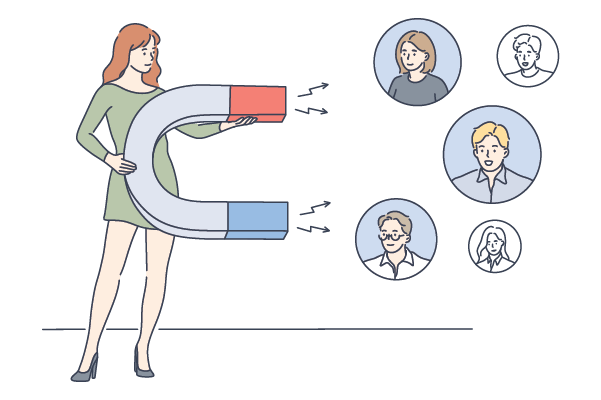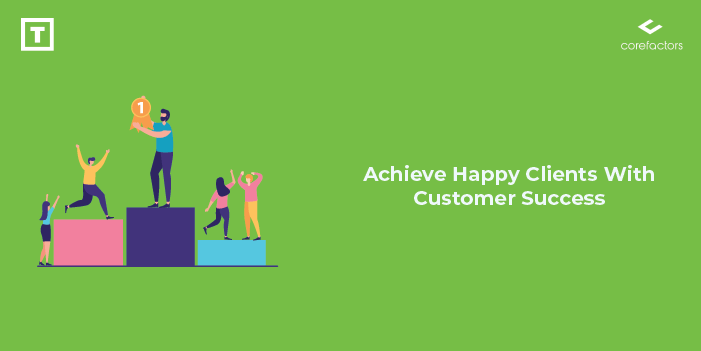People of all backgrounds have been trying to find the answer to this question for decades, and for almost as long, marketing leaders have been pondering the secret to customer happiness.
Unfortunately, most are still stumped. Something which is non-negotiable is keeping your customers satisfied with your product or service.
If customers are unhappy, they won’t just leave you, they would market your product or service wrongly, leaving you for one of your competitors.
Delighting existing customers as well as attracting new ones has an equal role in today’s market.
You have to make sure customers have a good customer experience using your product or service so that not only they buy it again but also ideally, spread the word through referrals or social media.
What Is Customer Success Management?
The process of collecting customer feedback, solving issues, and providing necessary help can be considered customer success.
The main target is boosting your customer loyalty, improving retention, reducing churn, improving revenue, and making your customers happier and more successful with your product.

A business that depends upon continuing income streams from its customers, their choice has become clear.
You can opt to manage your customer relationships actively or you effectively seize control over them and your company’s future to chance and the competition.
Customer acquisition is only the very first step in an extended journey for both customers and the company.
Keeping this in mind, you shouldn’t put customer success and customer support in the same basket.
Customer Support is only the process of providing help and solving a customer’s problems. Customer Success has wider functionalities and responsibilities.
To put it in simple words, the mission of customer success teams is to make sure that your users are satisfied, happy, and that they’re meeting their goals with your product.
Keep in mind that maintaining your customers is really important since it’s five times more expensive to acquire a new customer than to retain an existing one.
The targeted goal of Customer Success is to make more successful and happy customers. You can then convert them to be brand promoters and improve your Customer Lifetime Value (LTV).
It isn’t enough to simply acquire users. It’s also important to retain them as long as you can. Retaining your customers for a longer period of time automatically improves your LTV, which is very important for any SaaS company’s success.
Another thing to keep in mind is LTV and your ability to renew customers at the end of each billing cycle is one of the most crucial things investors and company buyers are considering before writing a check.
How You Can Increase Customer Retention With Customer Success Strategy?
It is important to note that as the business scales up, the cost of acquiring a new customer goes up as well.
While one cannot stop acquiring new customers, the art of staying connected with your existing customers and ensuring that they are successful in using your product can turn out to be profitable as well as predictable in terms of generating revenue in the long run.

Retaining your existing customers is extremely valuable. A lead management system lets you keep track of existing as well as new customers. This gives you an edge over your competitors by retaining more customers than your competitors.
Not because the cost of acquiring a new customer has been determined to be five times as much as it costs to hang on to an existing customer.
Selling your products and services to your existing customers has success rates of around 60-70% while selling it to new prospects has typical success rates of around 5-20%.
And increasing customer retention by as little as 5%, in this case, will potentially increase profits by 25-95%, which is great.
These figures mark the real value of customer retention very clearly and, while overall customer experience is important, it is customer success that drives retention.
Consider the following rules which will surely improve the customer retention rates:
Customer Success Goals And KPI’s
Developing long-lasting, mutually beneficial customer relationships with a deep understanding of the client’s needs and desires is a key aspect of effective customer success management. Part of this understanding should be the determination of their goals and what they expect from the products and services you are providing.
To gain the required insight will often require interaction with people at all levels in the client organization. The expectations of those working directly with your products are likely to be a lot different from the expectations of those responsible for budget allocations.
Customer Satisfaction (CSAT)
Monitoring and quantifying the extent to which customers are satisfied with what you have provided is essential.
It is very important to examine customer satisfaction for each individual customer and at the same time, looking at the overall experience of all customers.
How Customer Success Is Not Customer Support?

The main difference between customer support and customer success has sparked many discussions. The roles do share some similar skill sets and goals, but they implement totally different approaches.
Customer support teams help to resolve product-related issues and teach the customer about how the product works while customer success teams, by contrast, proactively work with customers to understand their business goals and help them get success with the product, therefore increasing the lifetime value of the customer with the company.
Some basic differences between customer support and customer success are:
Customer support receives and responds, while customer success proactively discusses and strategizes.
Customer support focuses on issue resolution and avoidance, while customer success works to achieve desired business outcomes as the customer journey continues.
Customer support metrics measure the quality of the service provided, resolution times, and overall customer satisfaction; customer success focuses on metrics related to business impacts like customer retention, expansion, and overall lifetime value.
Customer support professionals possess skills that coincide with engineering, marketing, and operational teams; customer success can extend to a wide range of disciplines and industry expertise and are more consultative. Both roles require practitioners to be empathetic, resourceful problem solvers with a comprehensive understanding of who the customer is.
Customer support is integral to running a business because customer questions always need to be answered, while customer success is often a value-added business function, driving revenue and expansion.
How Customer Success Contributes To Your Business?

Customer Success Improves The Renewal Process
The days of locking customers in for life with contracts and technological barriers are over. Instead, customers hold the power.
Tech businesses that can manage these renewal conversations better are able to grow faster and require less capital.
And CS provides the insight, organization, and team necessary to have the most productive, meaningful, and successful renewal exchanges.
Customer Success Reduces Churn
Tech businesses rely heavily on inbound marketing strategies. That means online reviews play a huge factor in the lead acquisition.
Add the user feedback with reviews, and you’ve got positive and negative product commentary flowing more freely than ever before, which means purchasing and churn decisions happen faster than ever before, too.
Customer retention requires a nimble team of experts who can not only predict churn but also stop it. That involves lots of training, educating, and positioning. Furthermore, customer success teams glean a wealth of valuable feedback from customers.
When they combine that information with the customer health data, they can inform product and development teams of proactive enhancements and additions.
Customers will have resolutions to problems they didn’t even know they had yet. If they don’t find problems, there’s no reason to leave either.
Conclusion
With a clear strategy and metrics to track, a commitment to creating the right culture, and the strength of a solid infrastructure of people, technology, and processes, your organization can be on its way to scale with customer success.
It’s a new way to understand your customer and yourself as a business or brand. It’s a way to challenge your company to be the best provider.
But most of all, it’s a way to combine the foolproof power of metrics and the soft touch of human interaction and understanding.
With customer success, you can meet your clients in the middle and begin to understand their needs and how you can surpass them.
You can even begin to predict what they will want next. So while we know the implementation process isn’t a one-and-done. Change the perspective you see your customers and you will surely notice the difference.







